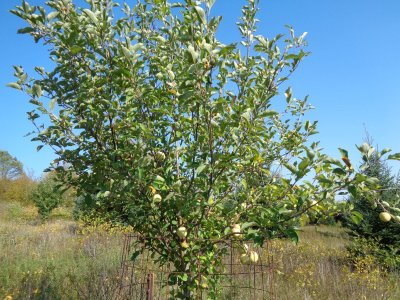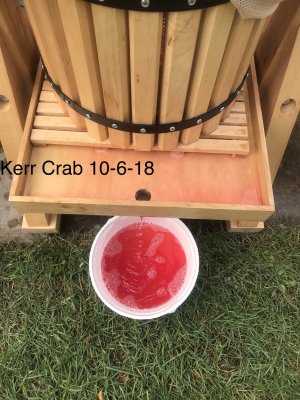From what i have read, Hewes hybrids have been developed to improve winter hardiness. Below is a list i found that shows the 4 classic cider apple trees
==============================
GREAT 4 COMBO
Keep in mind that good ciders are a blend of sugar, acid, tannin and an aromatic," he writes. "Few have the magic combination of elements, except Harrison, Hewes Crab, Roxbury Russet and Golden Russet. Usually, varieties are blended to achieve it, and this is the excitement and the mystery of artisanal ciders. The same blending of elements should be applied to pie making."
HARRISON (Bittersweet)
Also known as: Harrison Cider, Long Stem, and Harrisons Newark. Parentage/Origin: Essex County, New Jersey, early 19th century. Harvest: October. Description: Medium in size and round to oblong in shape, the yellow skin has black dots, and the yellow flesh is coarse and dry. Once lost to cultivation, Tom Burford found a 75 year old Harrison tree in 1989 and returned this valuable cider apple to the trade. Harrison juice is viscous and dark with complex flavors and exceptional mouth feel. The apple is scab and rot-resistant, bears annual, full crops, and keeps well in storage. It remains one of the very finest apples for cider-making, either fresh or fermented.
Harrison is also known as Harrison Cider, Long Stem, and Harrisons Newark. It first appeared in Essex County, New Jersey during the early 18th century, and was grown extensively for cider until the early 20th century. Throughout the 1800's, Harrison was a leading variety in cider production, valued for its ability to produce many small apples that made a champagne-like cider. By the 1900's, the rise of beer and prohibition largely exterminated Harrison production. This heirloom variety was thought to be lost until 1976, when it was discovered by Paul Guidez. More recently, Tom Burford has brought the Harrison back into cultivation. It is now grown by cider makers throughout North America.
The apple itself is small, round and yellow skinned, with small black dots. Harrison tastes dry and coarse, but yields a large percentage of juice when pressed. Harrison juice is viscous, syrupy, and dark, with complex flavors and exceptional mouth feel.
The Harrison tree is is a heavy annual bearer, with a single tree producing large quantities of small apples. Apples ripen in October in upstate New York, are scab and rot-resistant, and keep well in storage. It remains one of the very finest apples for cider-making, either fresh or fermented.
USDA Zones: 5, 6, 7, 8, 9
Heirloom: Yes
Uses: Fresh eating and cider
Harvest Period: Late
Bloom Period: Midseason
Pollination Requirement: Requires different variety with same bloom period
Origin Date: New Jersey 1817
Disease resistance: Good
Storage: 1 to 2 months
Rootstock: MM 111 (semi-dwarf)
Years to Bear: 2-4 years
Recommended Spacing: 12-16 ft.
Mature Size: 12-16 ft.
Water Requirements: 12-15 gallons per week May through Sept.


